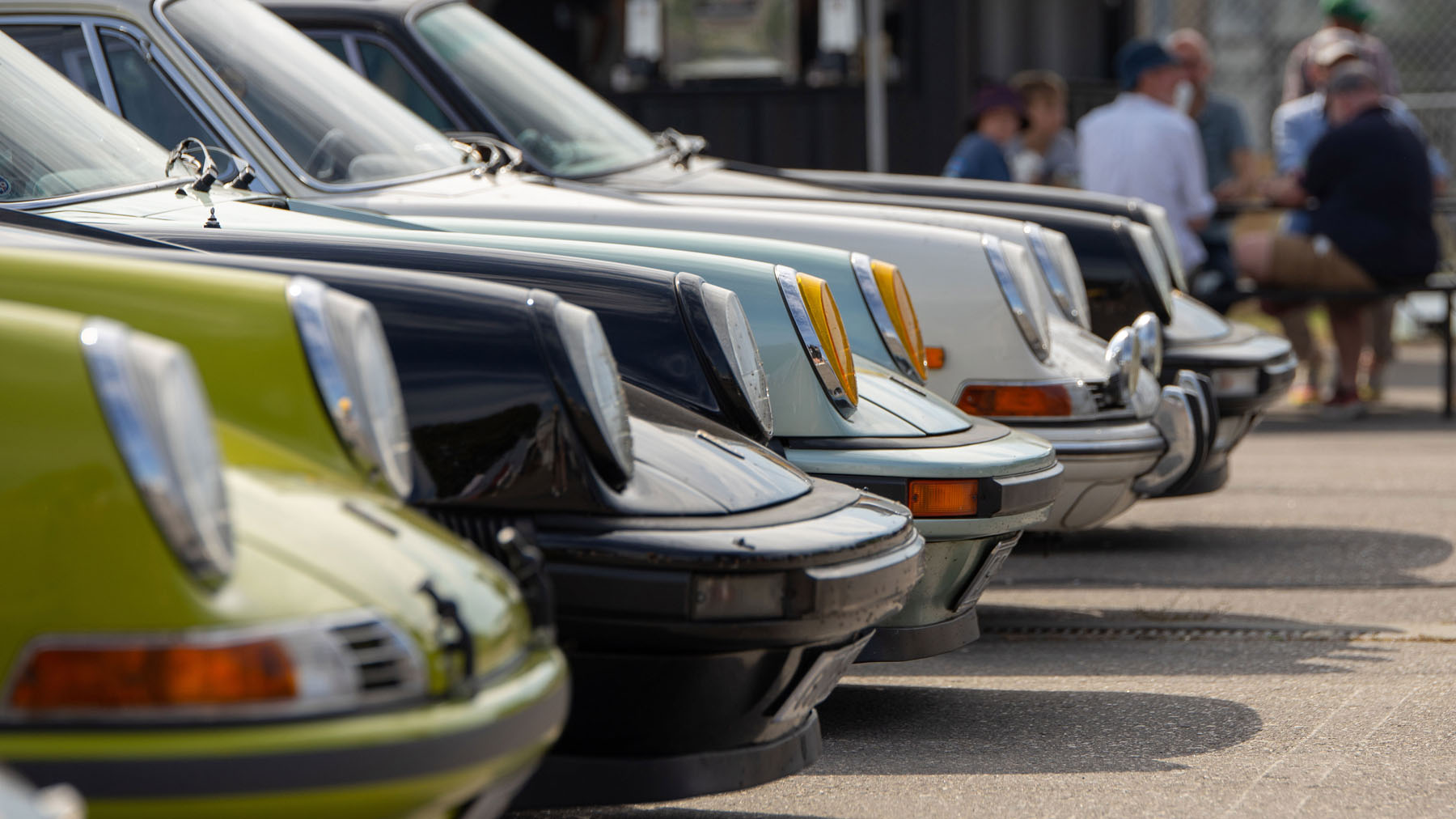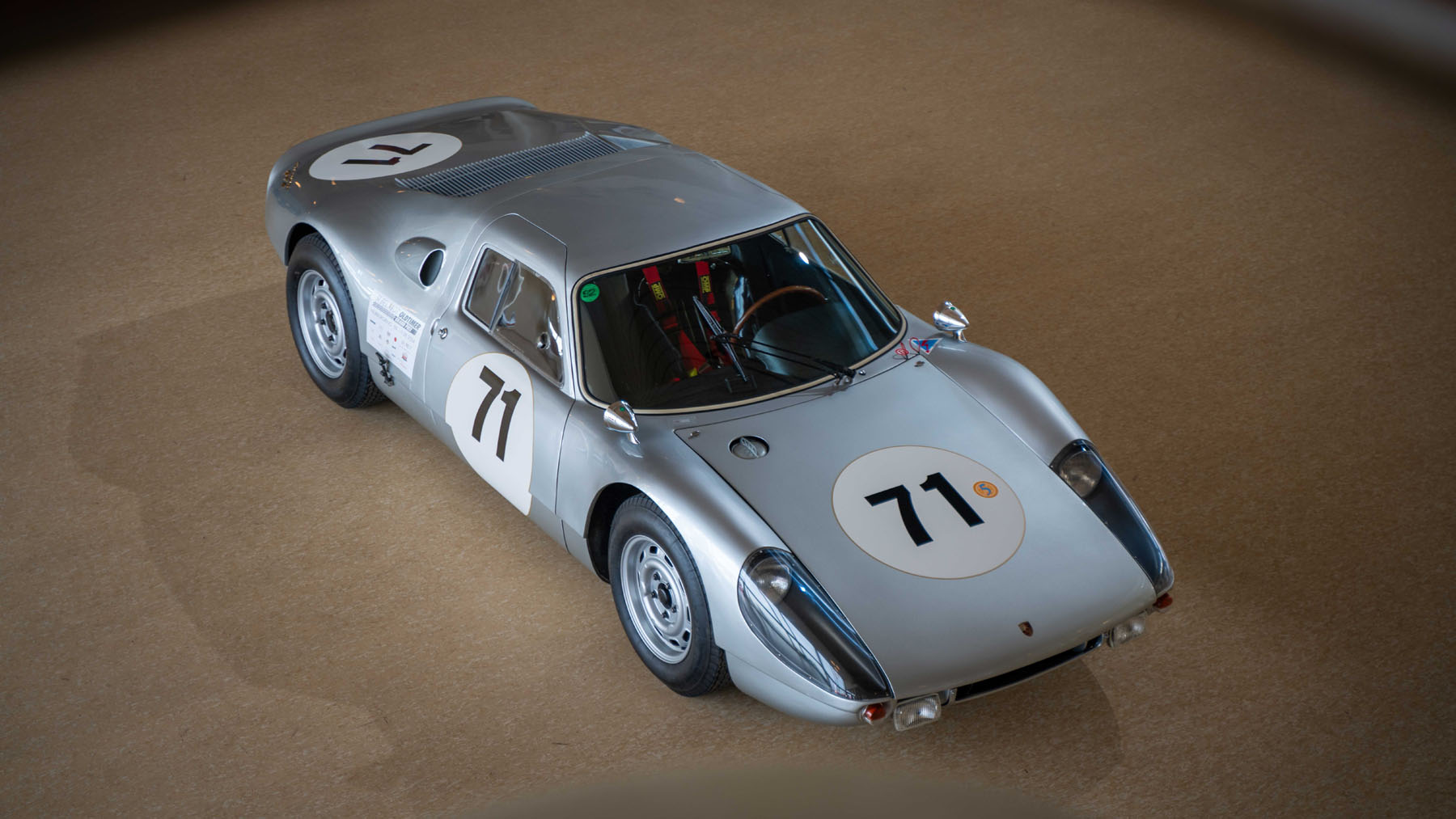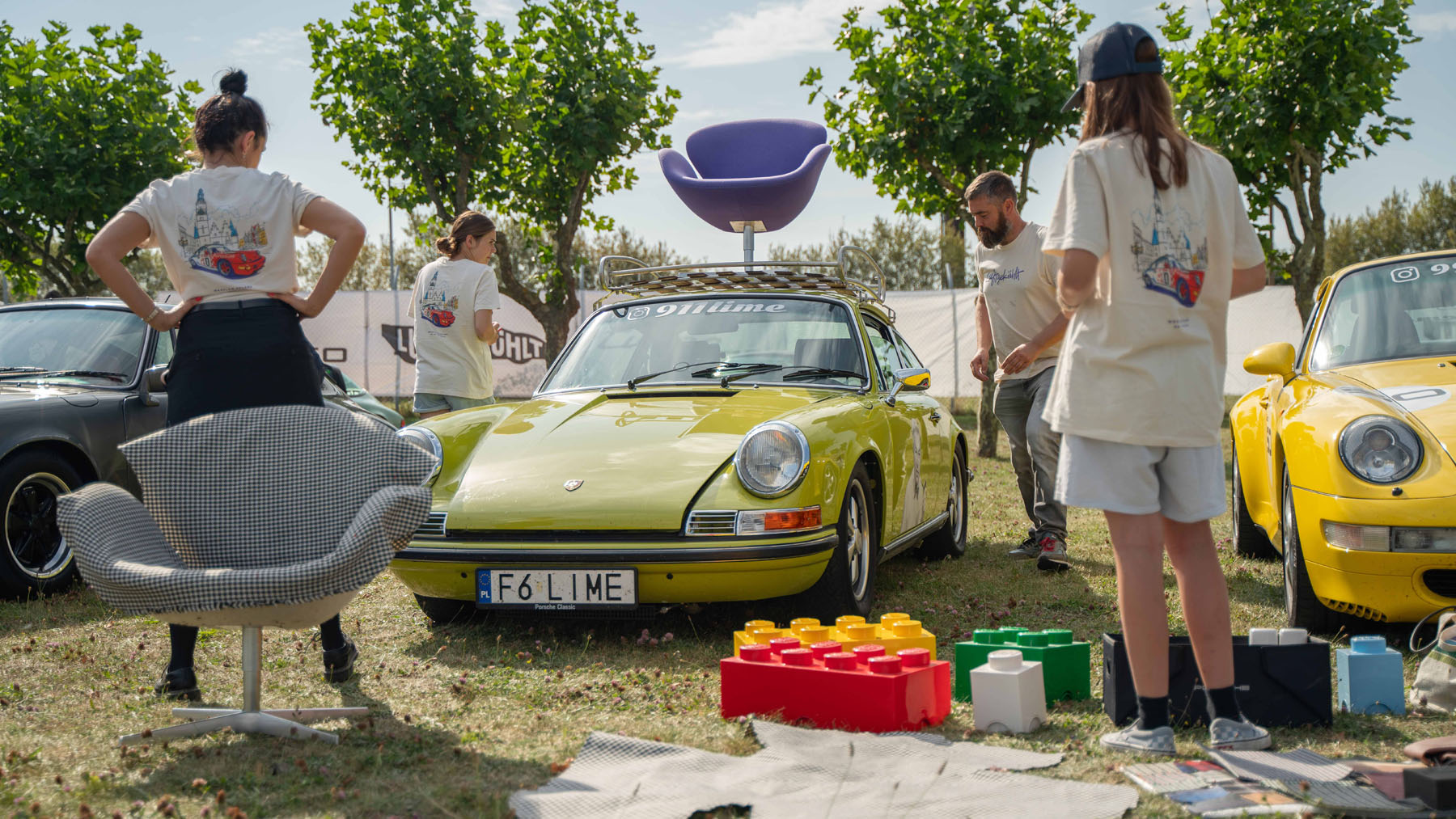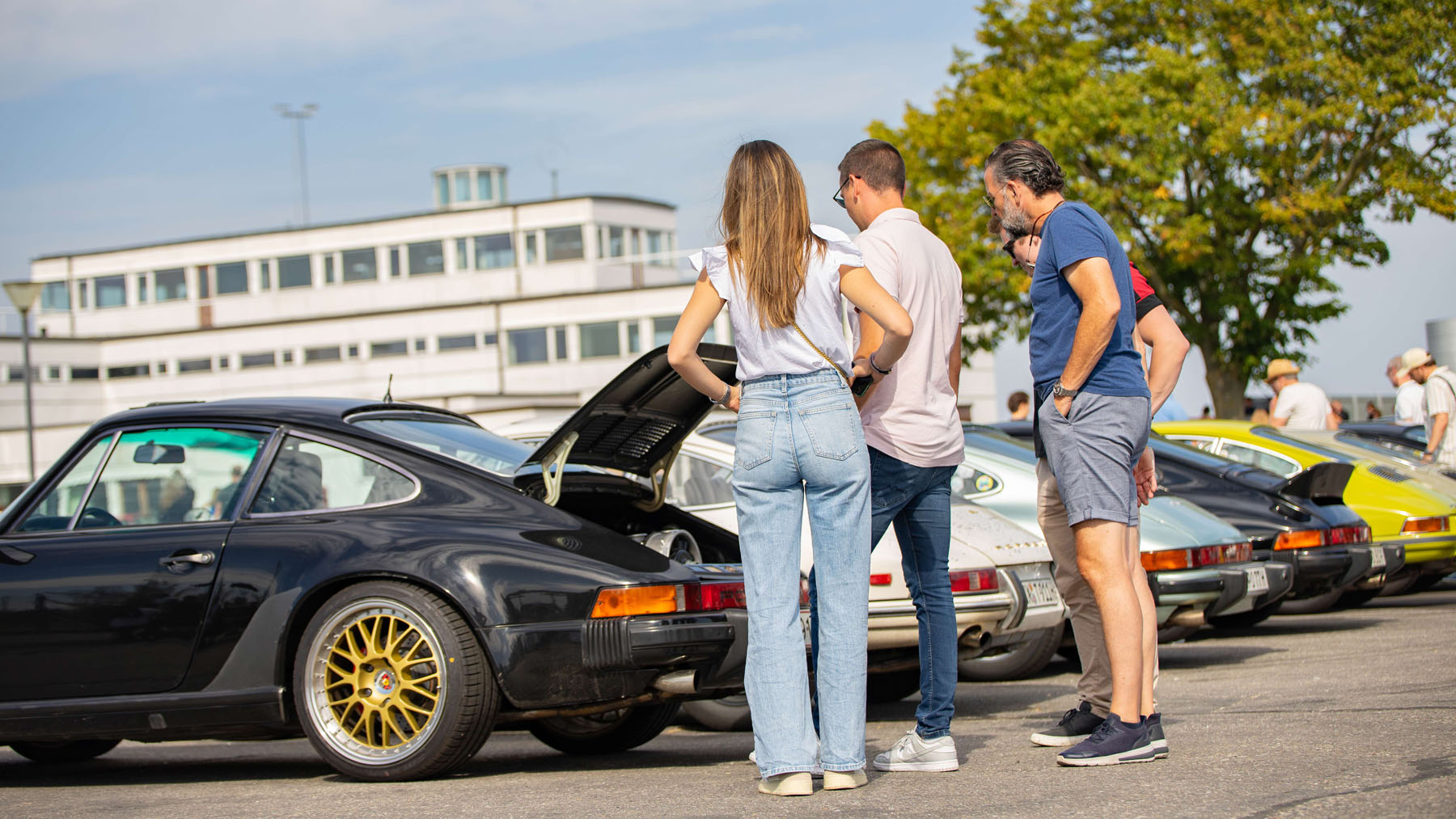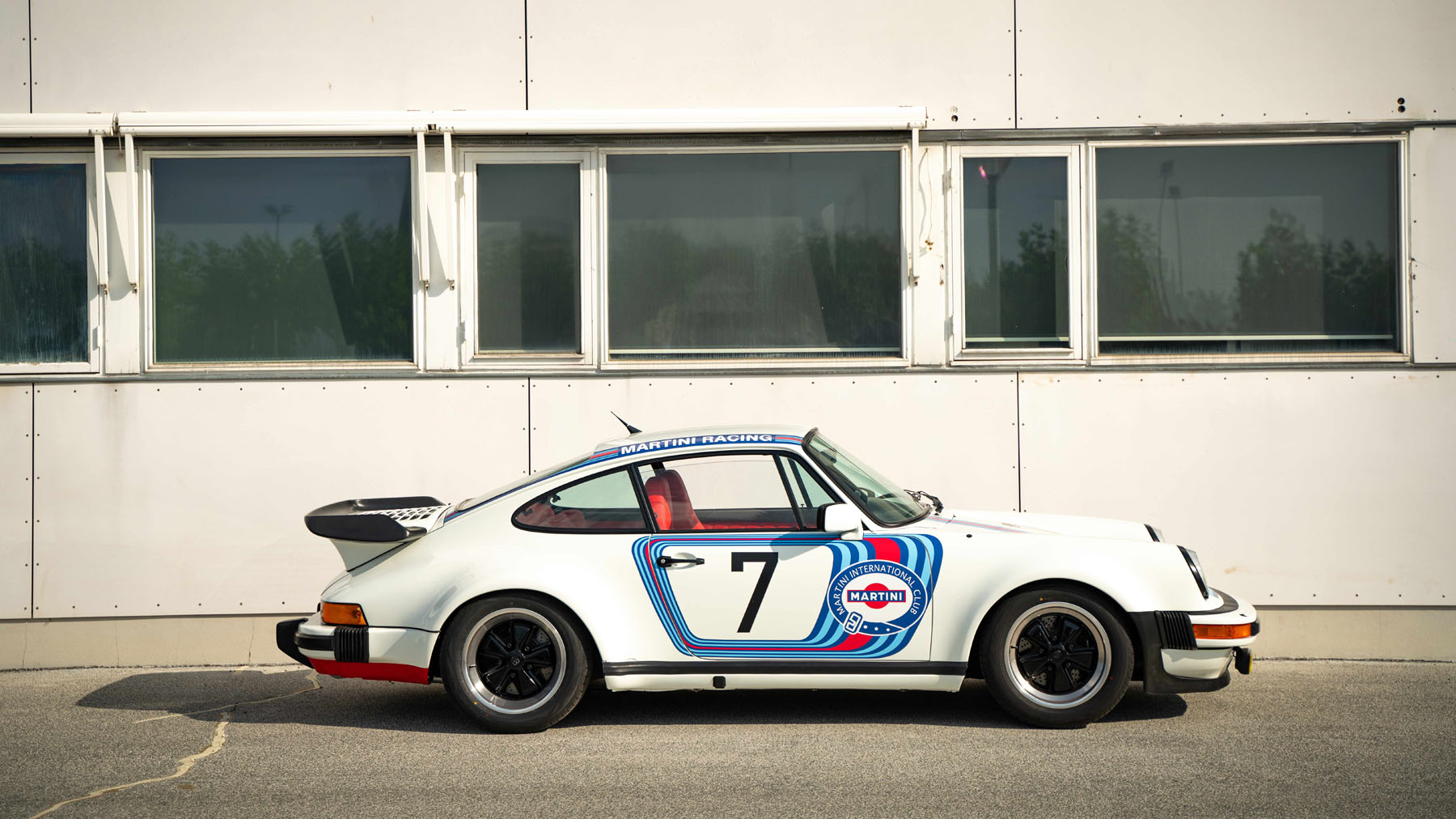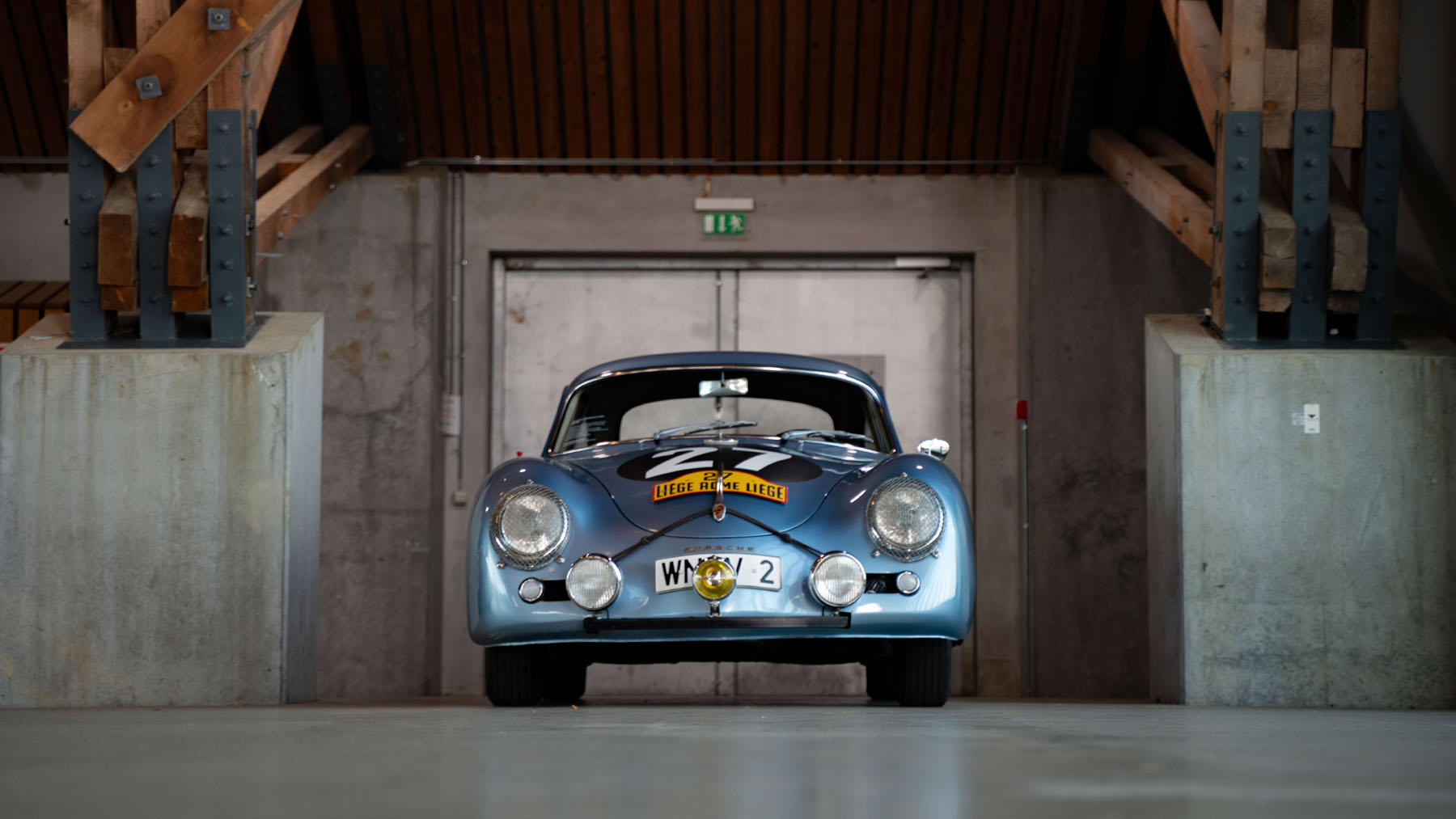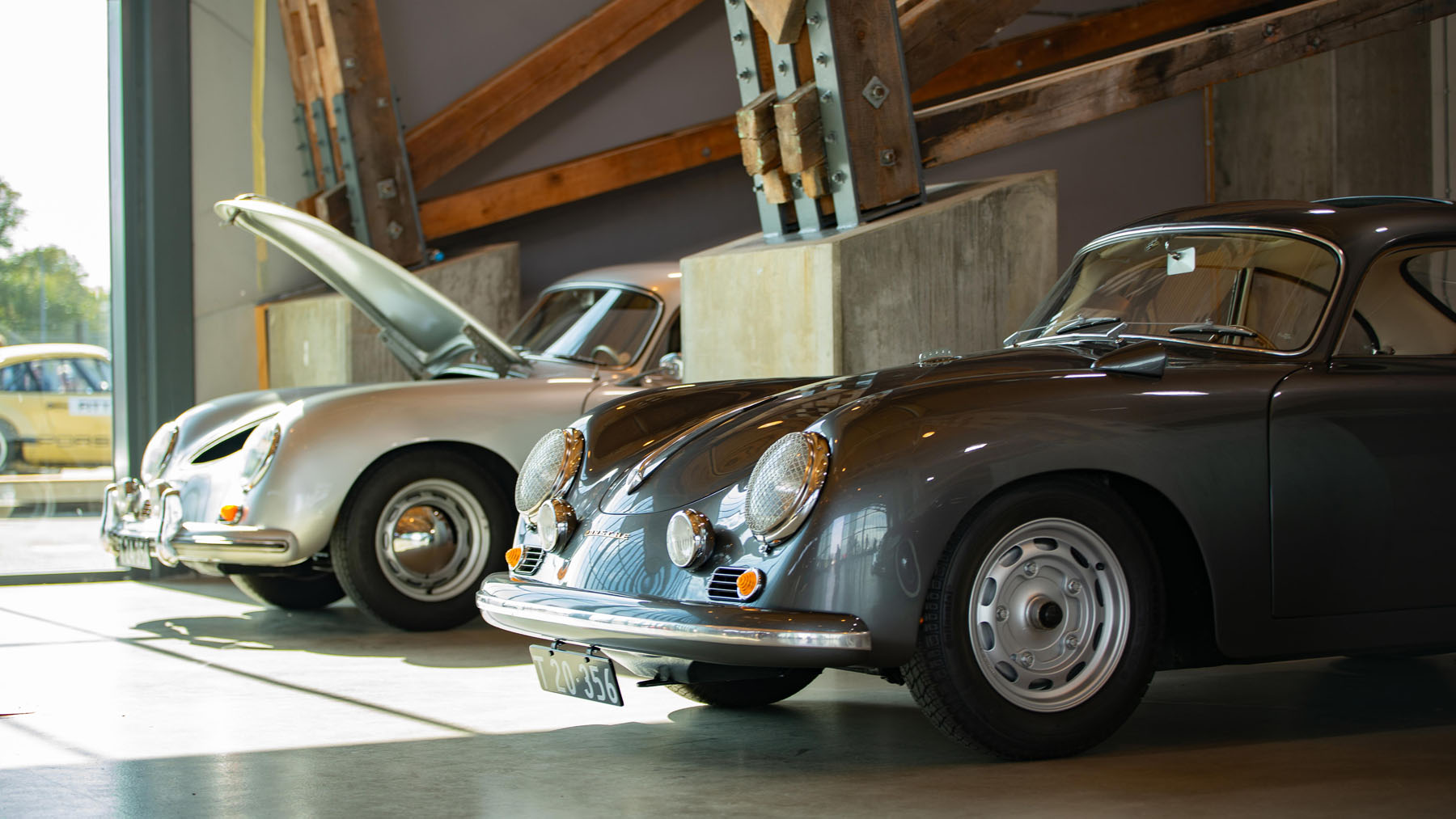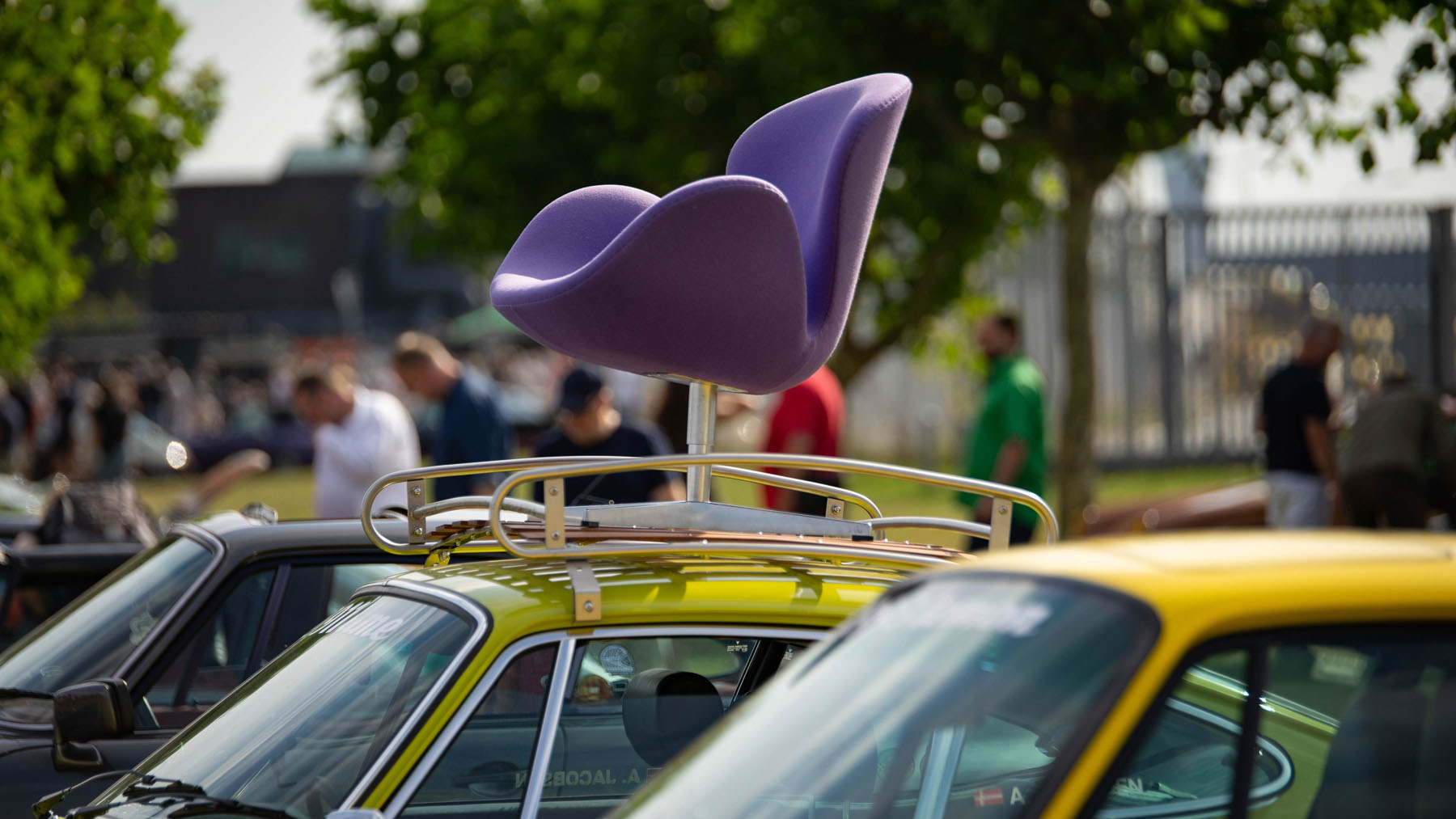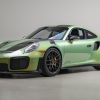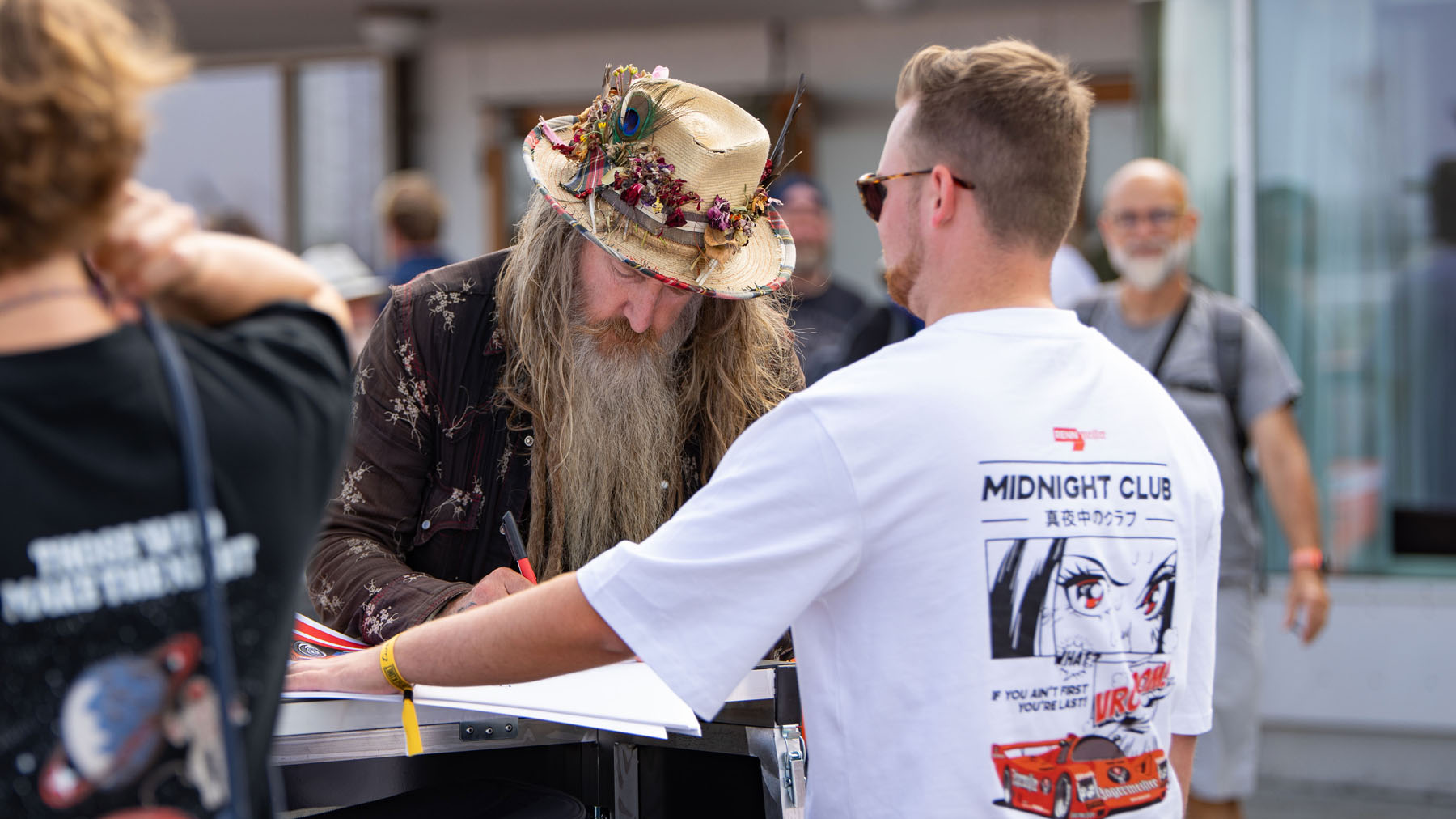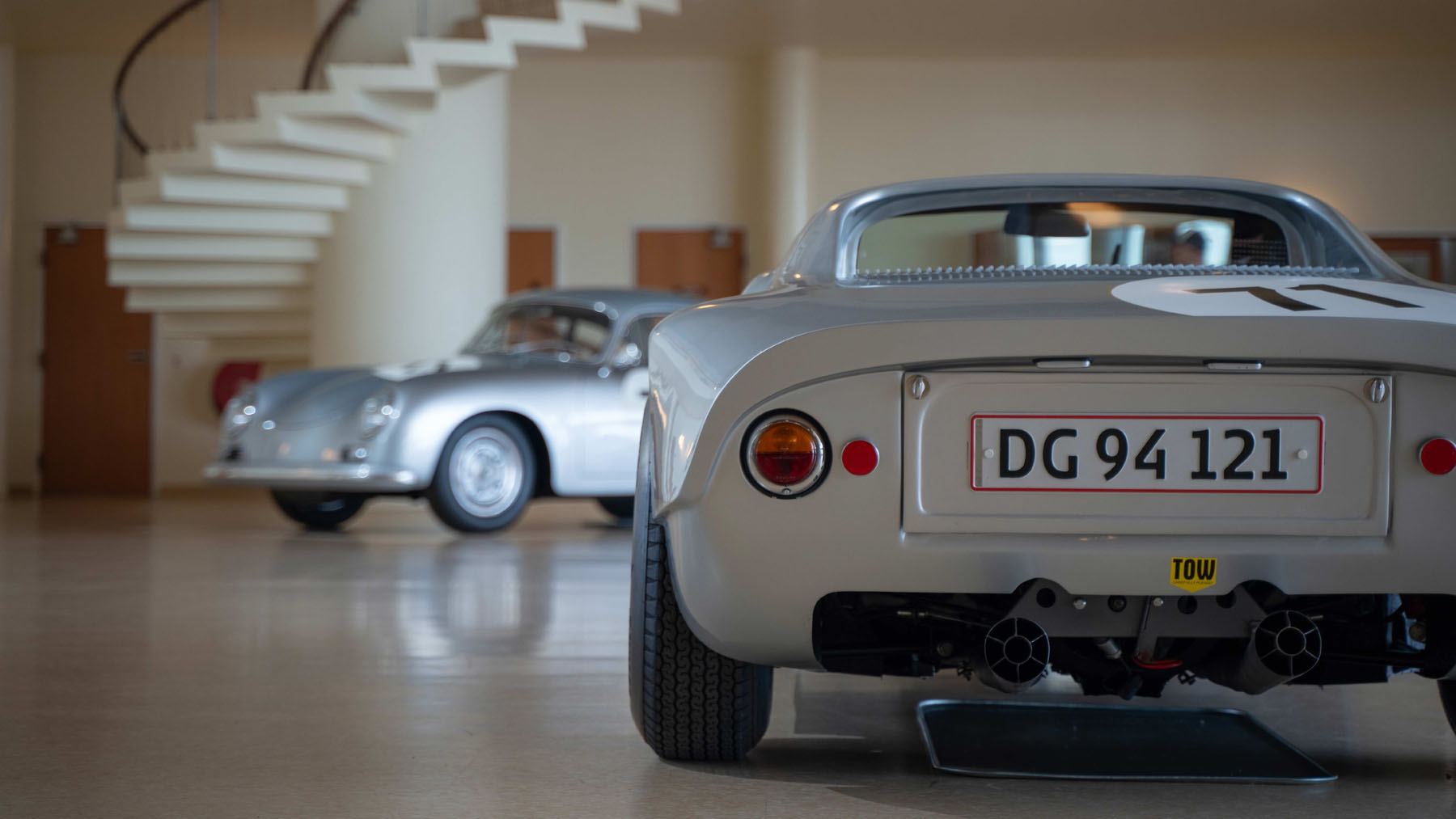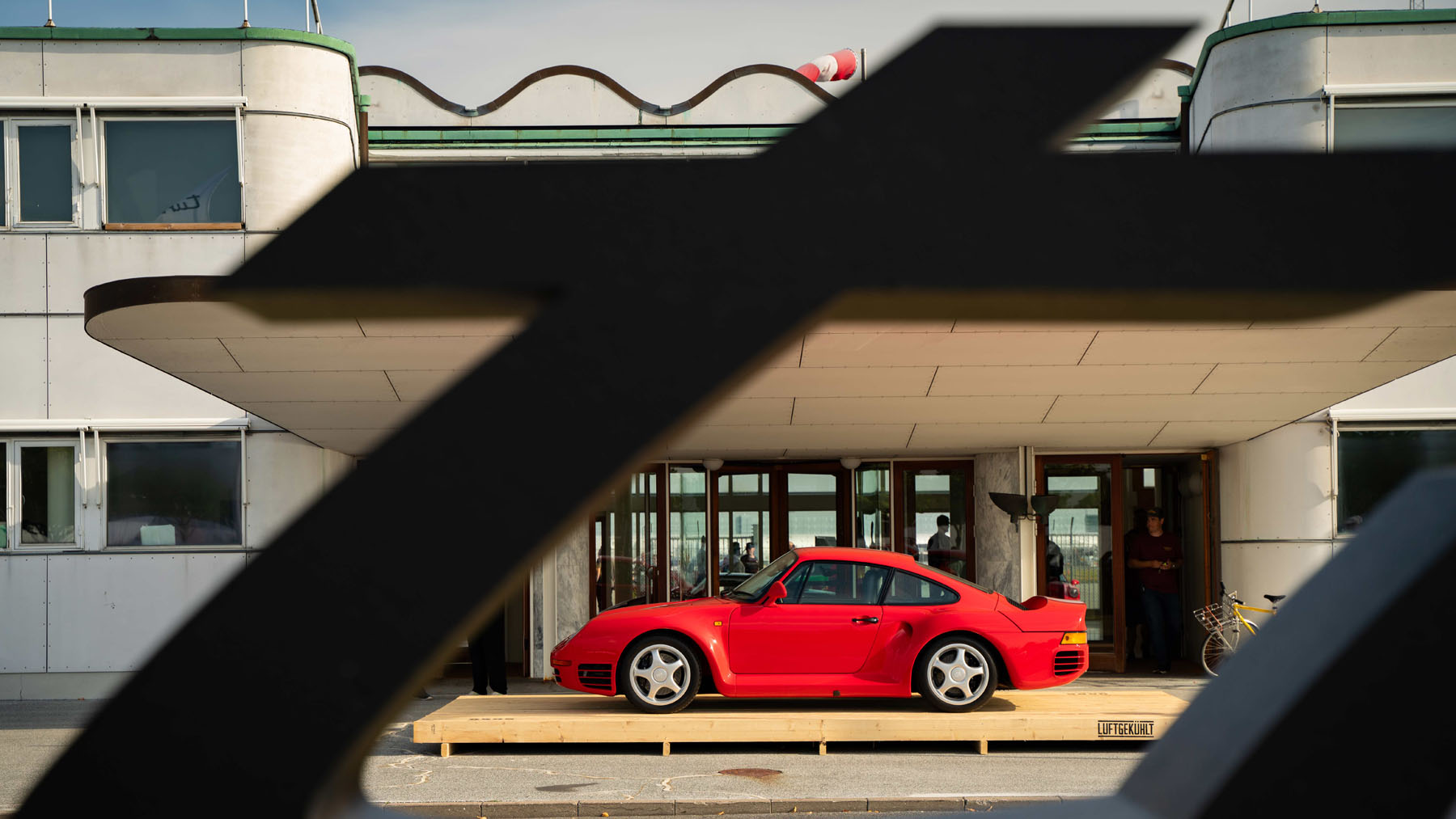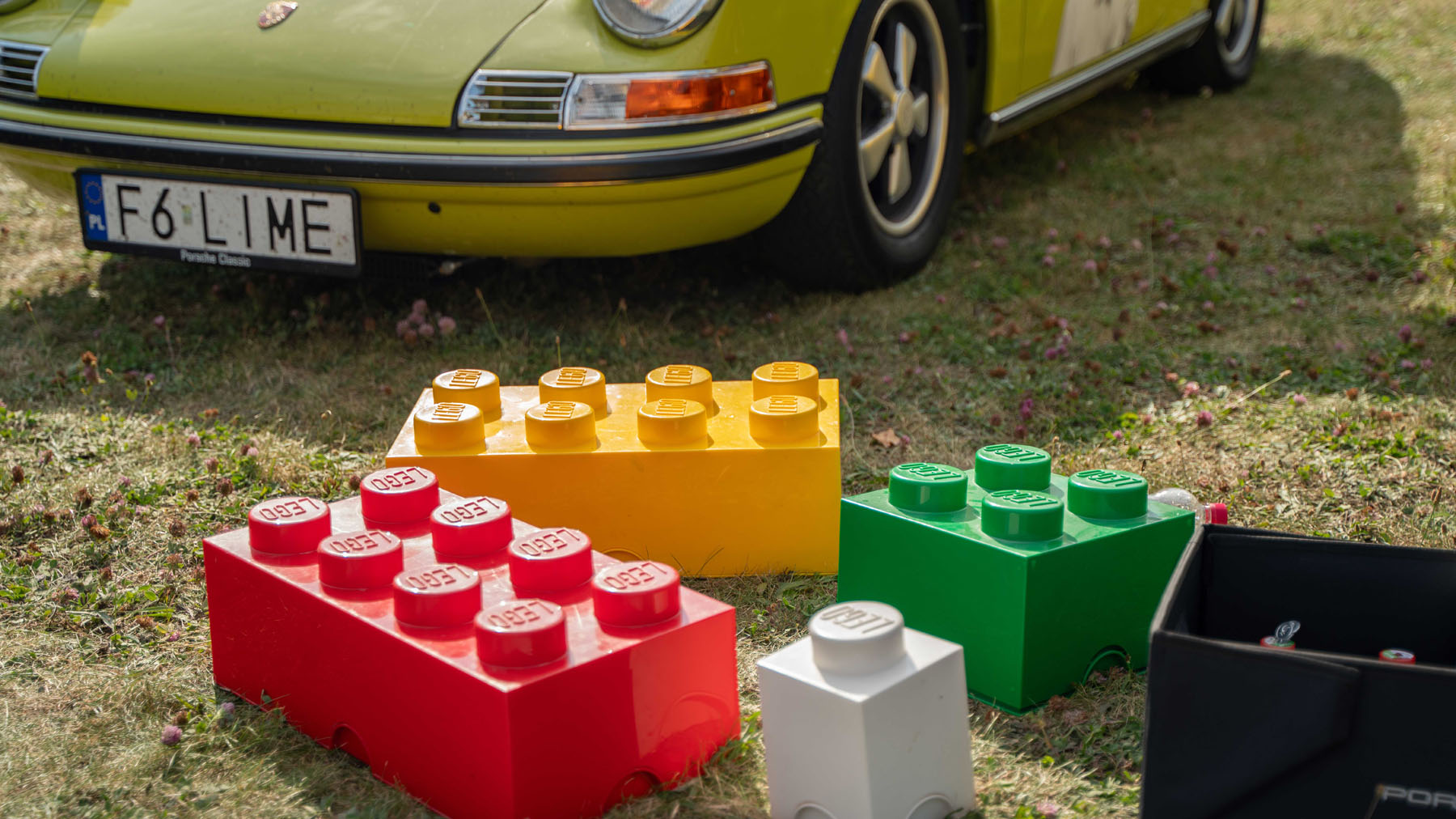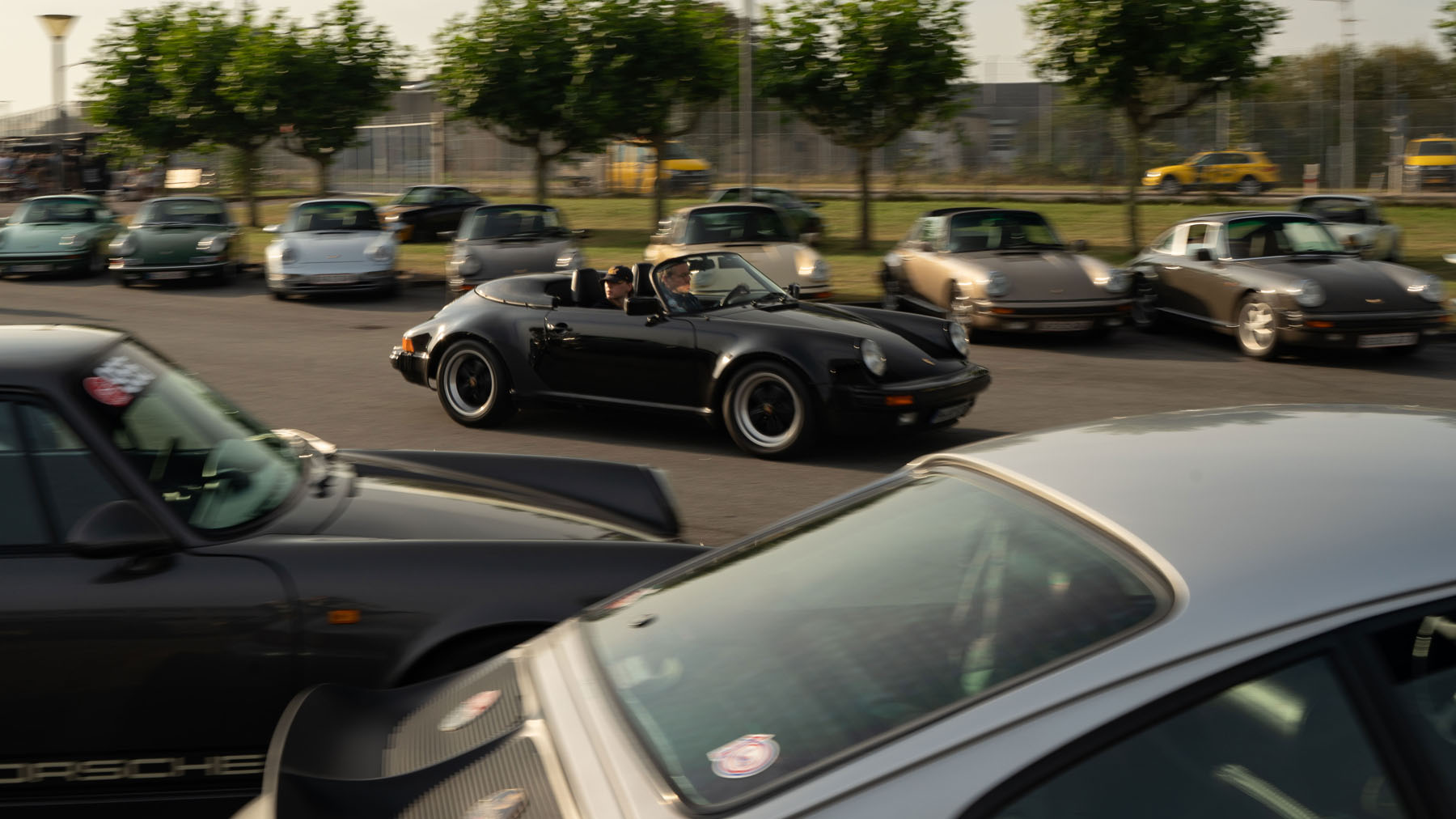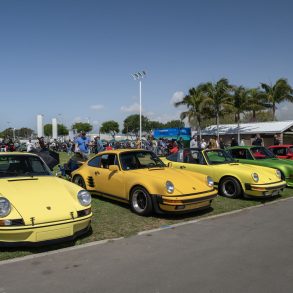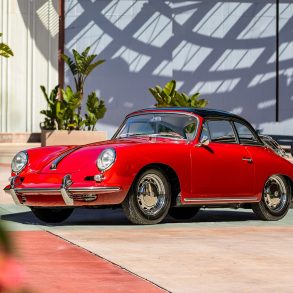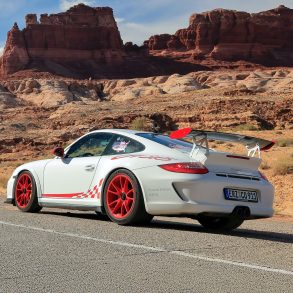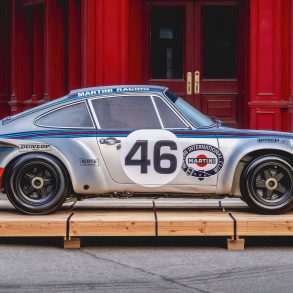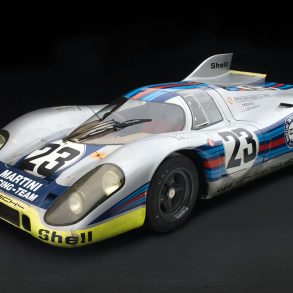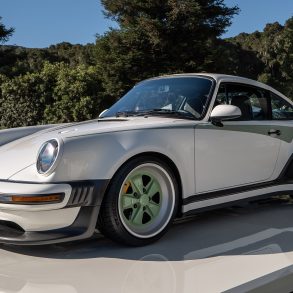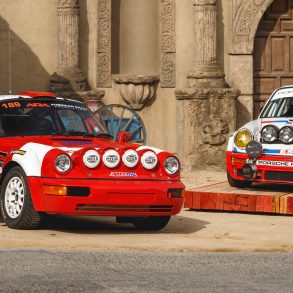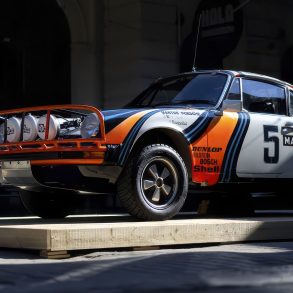The night before…
One night in 1999, under cover of darkness, an entire terminal building was lifted onto flatbed trucks – coupled together in a long road train – and moved a few kilometers across runways and taxiways to a new home on the other side of Copenhagen Airport. All air traffic was stopped so that relocation of the famous old terminal could begin. But with only a few hours until the skies reopened, the precarious cargo was followed by several bulldozers, ready to clear the runway in case it all went wrong.
From a spontaneous gathering to a global hit
Fortunately, it didn’t, and so that terminal – a masterpiece of 1930s modernist design – could play host to the latest edition of Luftgekühlt, on the second stop of its European tour over the past weekend. Dreamt up by two-time Le Mans winner Patrick Long and the noted creative director Howie Idelson, the event started as a spontaneous gathering in Los Angeles a decade ago. It quickly became a global hit, with Porsche fans coming together from afar to worship all things air-cooled. After a sell-out show in Poland in June, it was Denmark’s turn this weekend, as ‘Luft’ rolled into Scandinavia for the first time.
Artistic element
So why here? As always with Luftgekühlt, the visuals are essential, and Copenhagen’s vintage terminal and hangars provided a perfect match for the cars – combining a lived-in patina with some Instagram-friendly shine. As the gates opened, Luft’s Creative Director Jeff Zwart led groups of cars on his bicycle, directing them to carefully curated spots. An award-winning director and photographer, as well as a Porsche racer and Pikes Peak legend, Zwart is both an enthusiast and an artist.
Jeff Zwart comments
“The cars are my paintbrushes,” he says. “I get to use all these different colors and shapes. It allows you to transform a place so it looks slightly different than most people see it. As always, we want to create a great experience and a great way to showcase the cars.” In Copenhagen, he found space for around 250 cars, with headliners including a 917 LT, a 550 Spyder, and a 904 GTS – the latter forming the centerpiece of the ‘silver car room’ in the old terminal concours.
But it’s not just about the star cars. “One thing I like about dropping into different countries,” says Zwart, “is discovering a whole new group of cars, people and stories.” A lot of people, in fact: about 3,000 over the course of the day, some with cars, some just to soak up the atmosphere. And with limitless sunlight throwing a summery spotlight on the cars, plus pool-vibe playlists floating over the site, along with the wafts of barbecued burgers, this corner of Copenhagen felt like the only place to be.
Diverse Lineup
A long line of people formed to meet Porsche collector and fashion designer Magnus Walker, filing past another line-up of bright orange Jägermeister racing cars as they waited, including a 911 Carrera RSR 3.0 and a 956. On the other side of the terminal, one family proudly displayed their lime-green 1971 911 T, complete with special tributes for the local hosts – including an Arne Jacobsen egg chair on the roof, a pile of giant Lego bricks, and some fabric badges included Danish flags and Ugly Ducklings.
But perhaps the star of the show wasn’t a car at all, but rather a PFM 3200-powered Mooney airplane – a ‘Porsche of the skies.’ “Literally since the beginning of Luft I’ve been trying to get one to a show”, says Zwart. “We’d looked at taking wings off and transporting them by road. When I had a runway, suddenly I realised I could get one here. The owner flew it here especially. It’s a very rare aircraft.” The aviation parallels don’t end there. Vilhelm Lauritzen’s terminal itself has parallels with the Porsche design philosophy.
Form follows function
At a time when many architects focused on unnecessary ornamentation, Lauritzen was a committed functionalist. The terminal’s undulating brick ceiling, like waves rippling high above, might look fancy but it’s designed that way because it’s strong – removing the need for supporting pillars in the light and airy space.
Keeping history alive – yet relevant – is what Long and Idelson always wanted Luft to be about. And wherever the show goes, the philosophy stays the same. “Every car is important” says Zwart. “It doesn’t always matter how nice it is, or how historically significant. It’s wonderful that people just drive these cars, and drive the spirit of Porsche.”
Above content © 2024 Dr. Ing. h.c. F. Porsche AG reviewed and edited by Rex McAfee
Related Content


